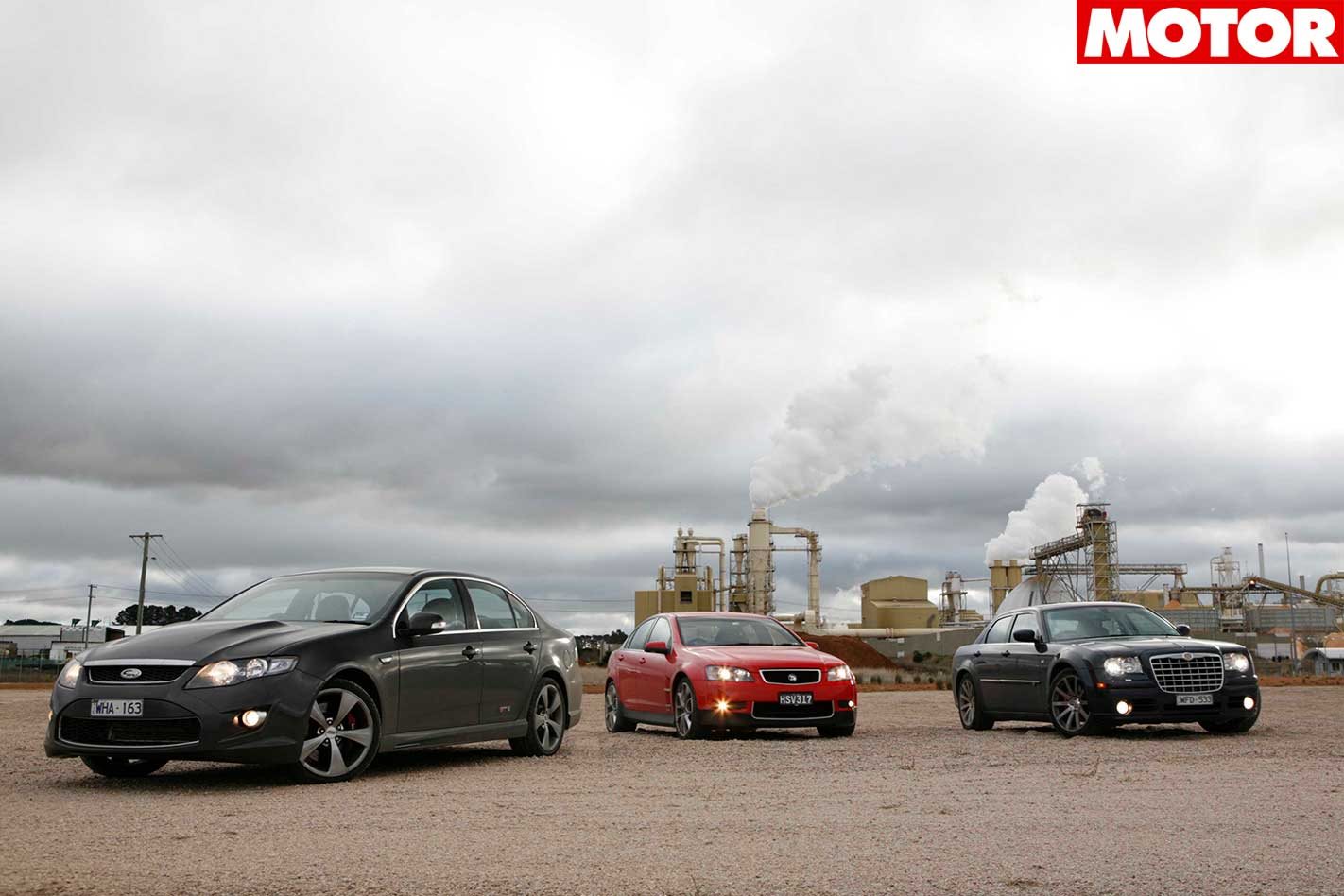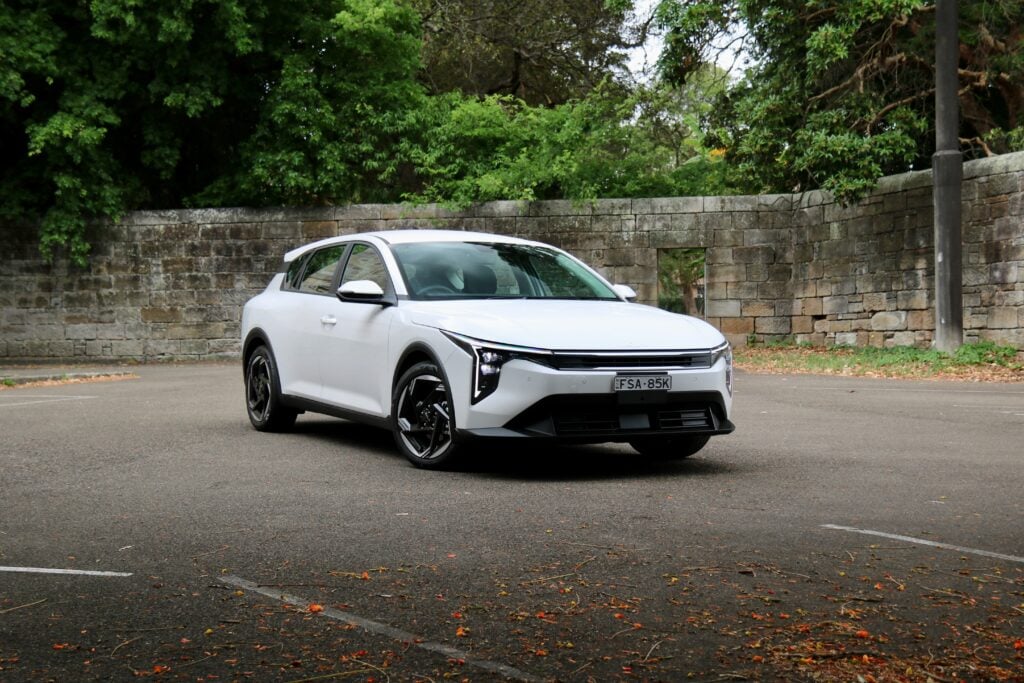We all know a bloke like this. He might be your boss, your uncle or even your old man.
This review was first published in MOTOR magazine’s August 2008 issue.
Monday to Friday, he’s a pen-pushing city slicker. But after dark and on the weekends, he’s your average Aussie bloke (or chick) who loves football, meat pies, kangaroos and Holden cars. Or maybe Fords.
Like many Baby Boomers, this white-collar worker is earning a handsome wage, but deep down, he’s still clinging to The Dream. The V8 sedan has long been admired for the status it holds in the Australian motoring landscape, but more importantly, it’s about a lust for the head-kicking energy and sound that only a bent-eight can produce.
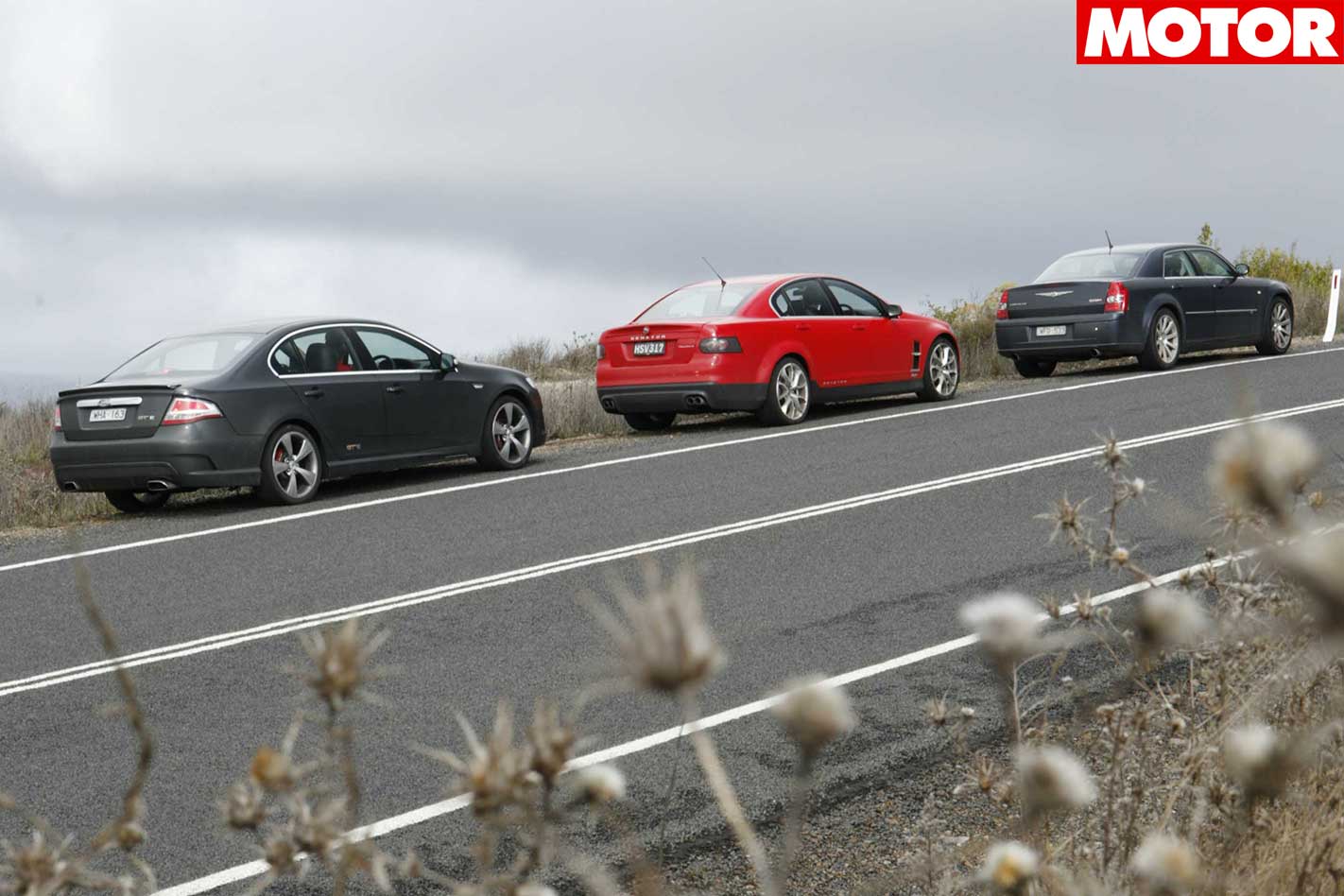
Our friend’s matured taste might prefer one of the latest breed of relatively affordable, high-performance luxury V8 sedans that have been increasing in popularity here ever since Brocky’s superb VK HDT Director tore up the streets in 1984.
Europeans don’t own the fast luxury sedan market anymore, especially when the home-grown product delivers such polished bang for your buck. And don’t let anyone tell you that the V8’s dead, because judging by current sales figures, big bent-eights have never commanded so much interest.
The fresh face in the segment is Ford Performance Vehicle’s flagship GT-E, benefitting from the wealth of improvements that accompanied Ford’s all-new FG Falcon, backed by a re-tuned, 315kW-strong Boss 5.4-litre V8.
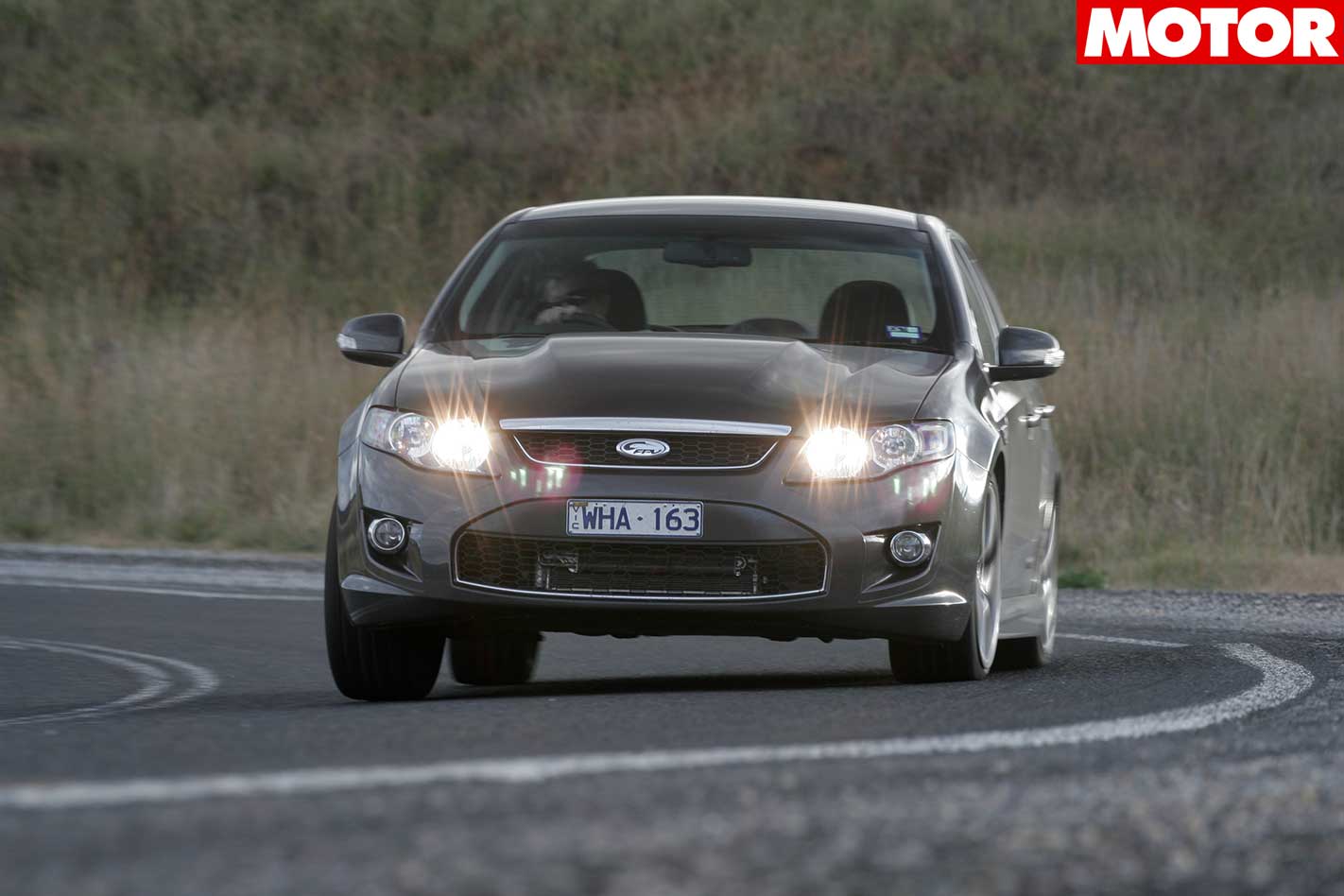
HSV’s Senator has already proved itself formidable opposition, and it’s not hard to understand why, even before you turn the key.
Poised at the kerbside in Sting Red, the HSV’s loud hue is nicely offset against the dark lower bodywork and fat (optional) 20-inch wheels, accentuating the car’s muscular stance. And with HSV’s new 317kW 6.2-litre LS3 V8 under the bonnet, the Senator promises to be even more imposing out on the road.
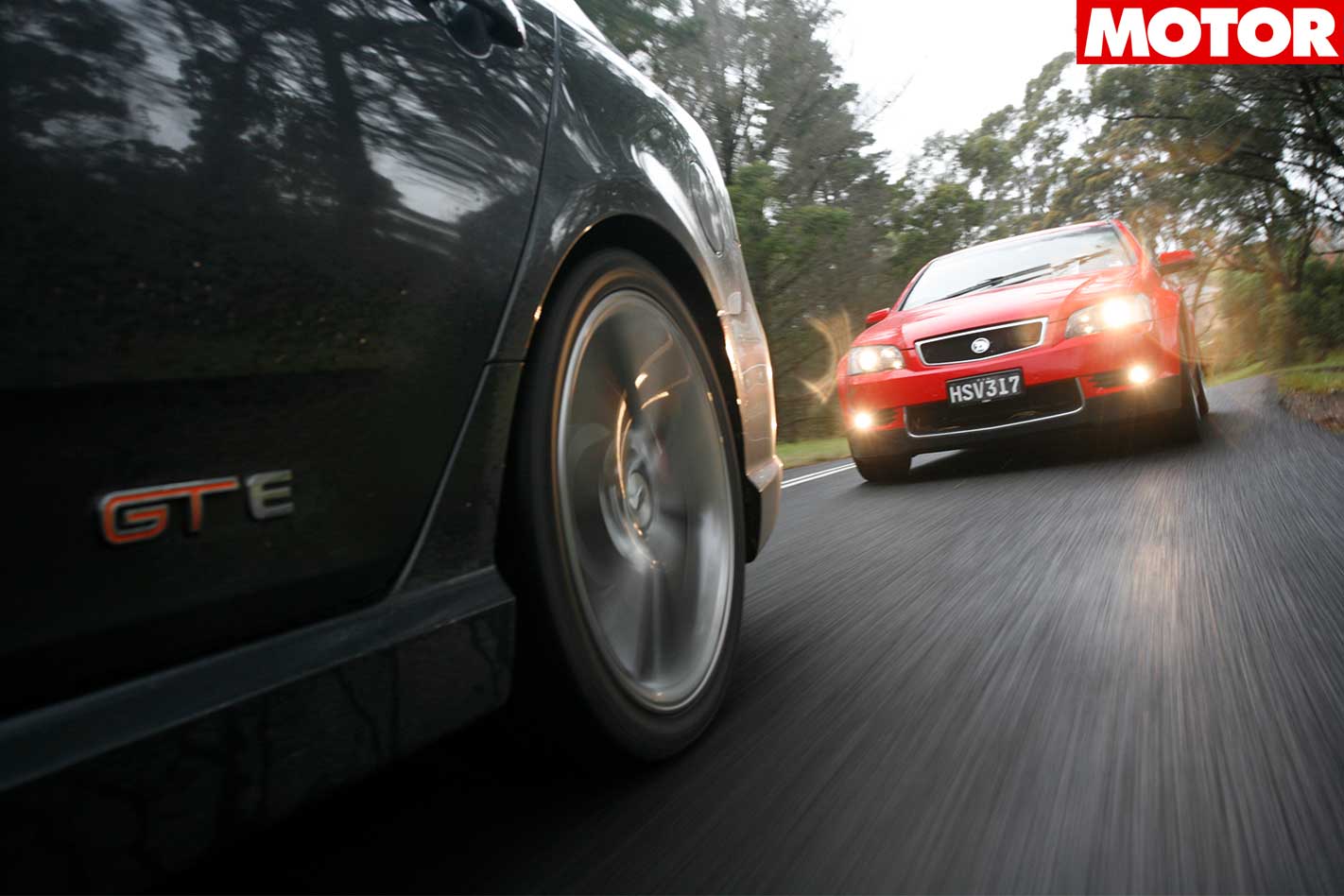
The sound the SRT8 bellows on the open road, though, is without peer. A deep resonance pulsates through its cabin and is only enhanced by the gruff stutter from its exhaust as the five-speed auto blurts an upshift.
The Chrysler’s aural drama makes full throttle on any length of road a sobering, satisfying experience. If it was the slowest of the three, we’d grant it penance just for its acoustics, but the 300C SRT8 fired down the strip in 5.17 seconds to 100km/h and slammed home the quarter in just 13.26.
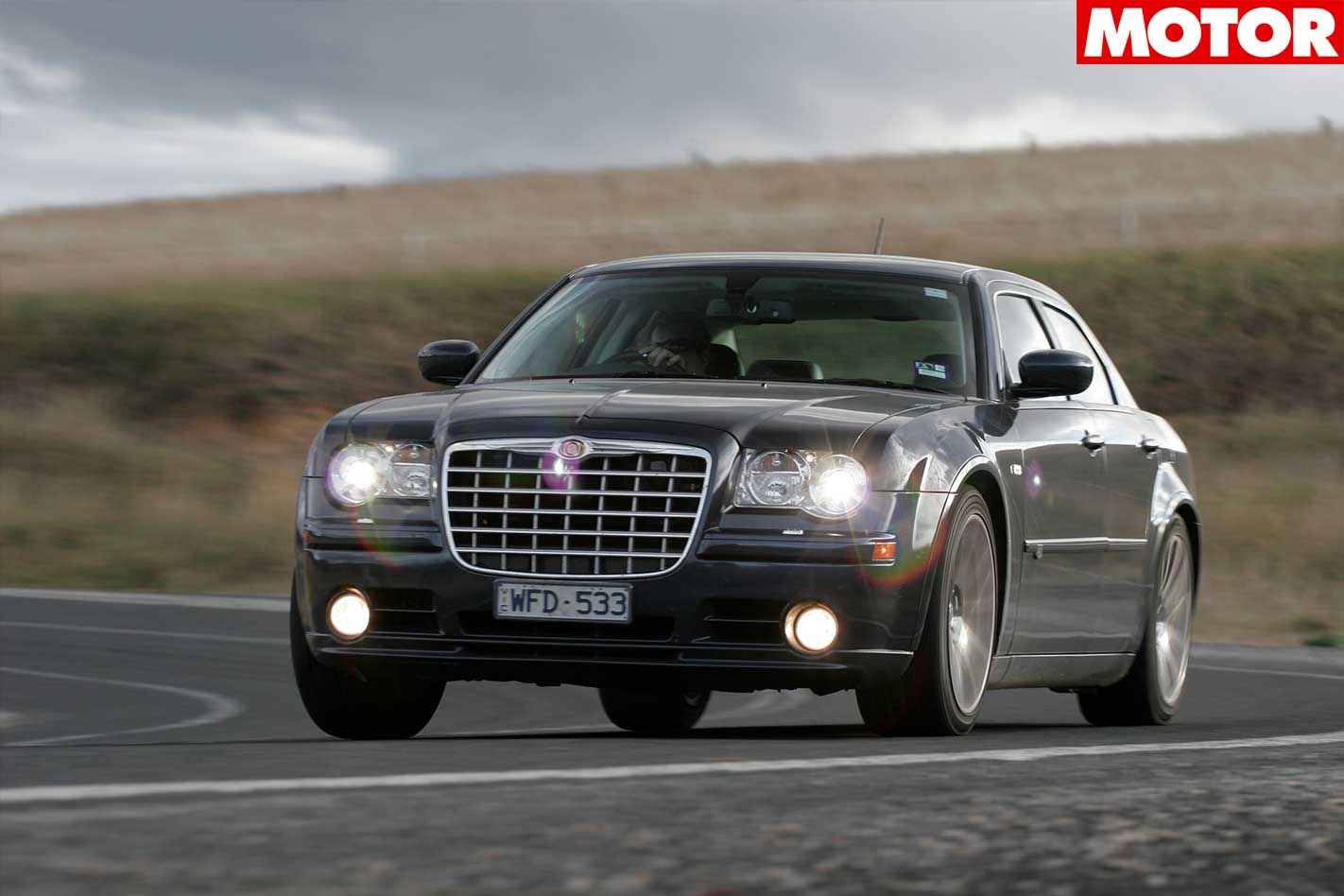
It all stems from the heart, and that’s the new LS3, which, in contrast to the Hemi’s sweetness, is the loudest and angriest of our executive trio from the driver’s seat. There’s useable grunt everywhere in the rev range, but from about 4500rpm, the LS3 really takes off.
It bellows a bit more character and sounds more purposeful than the less well-endowed LS2, which now seems just a tad lazy in comparison. And that purpose carries over to the strip – the Senator recorded blistering acceleration times, clocking an easily repeatable 0-100km/h number of 5.08 seconds on just the second run.
The 400m mark arived in an equally rapid 13.17, which is signifcantly quicker than the 13.7sec MOTOR recorded in the old 6.0-litre Senator at Oran Park back in March ’07.
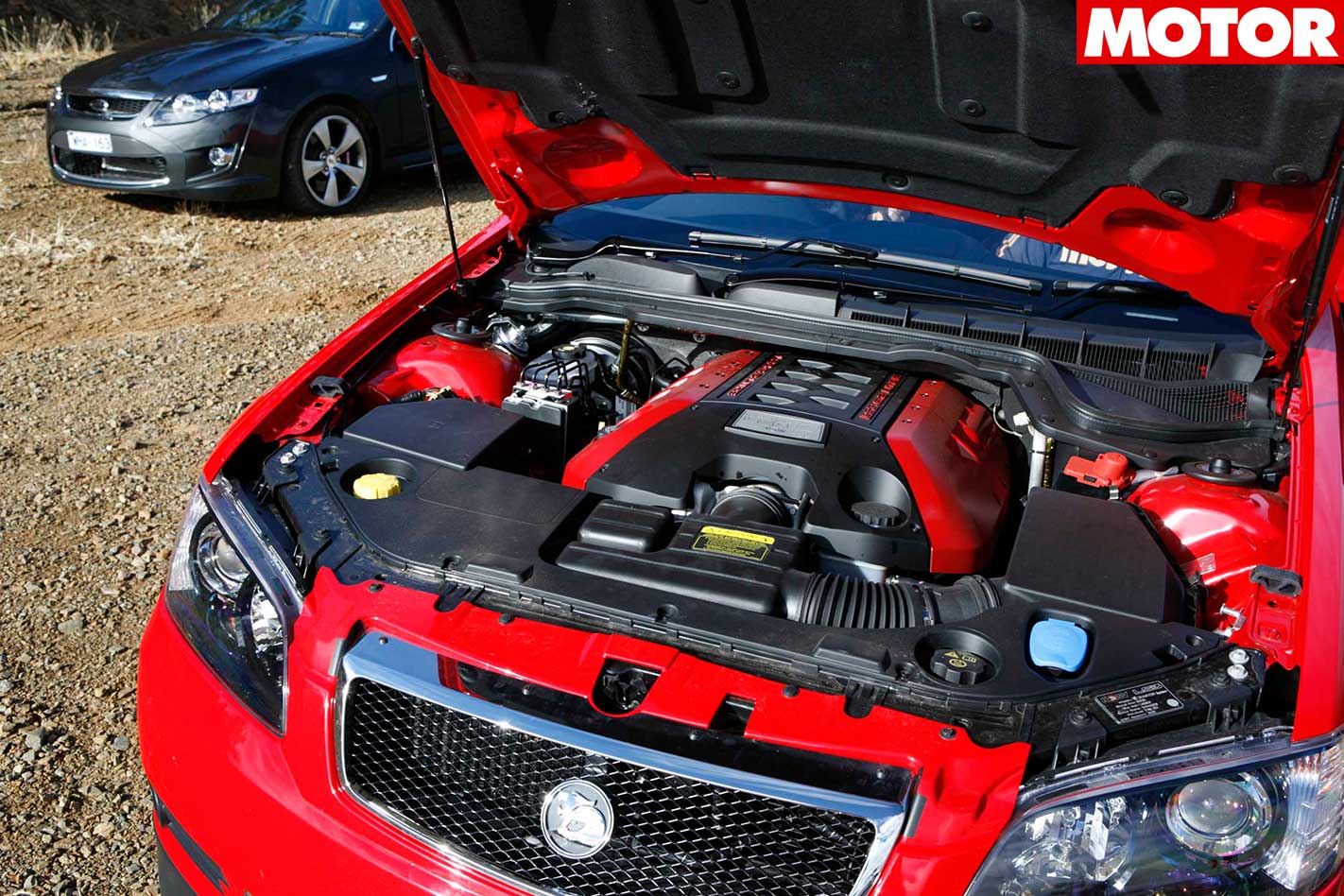
Finally, the 315kW Boss V8 has the all-round muscle that the 290 version lacked, as evidenced by the fact it nailed the highest 400m terminal speed – 177.73km/h – at the end of Oran Park’s main straight. While still not the heaviest hitter down low, urge swells sufficiently as you approach the 6000rpm mark, before it gives one last kick towards the raised 6500rpm cut-out.
Thankfully, the GT-E has also picked up the baton dropped by the new XR8’s paltry soundtrack, roaring like a real V8. With several thousand more kays than when we drove it at launch, the test GT-E sounded nice and meaty, even from outside.
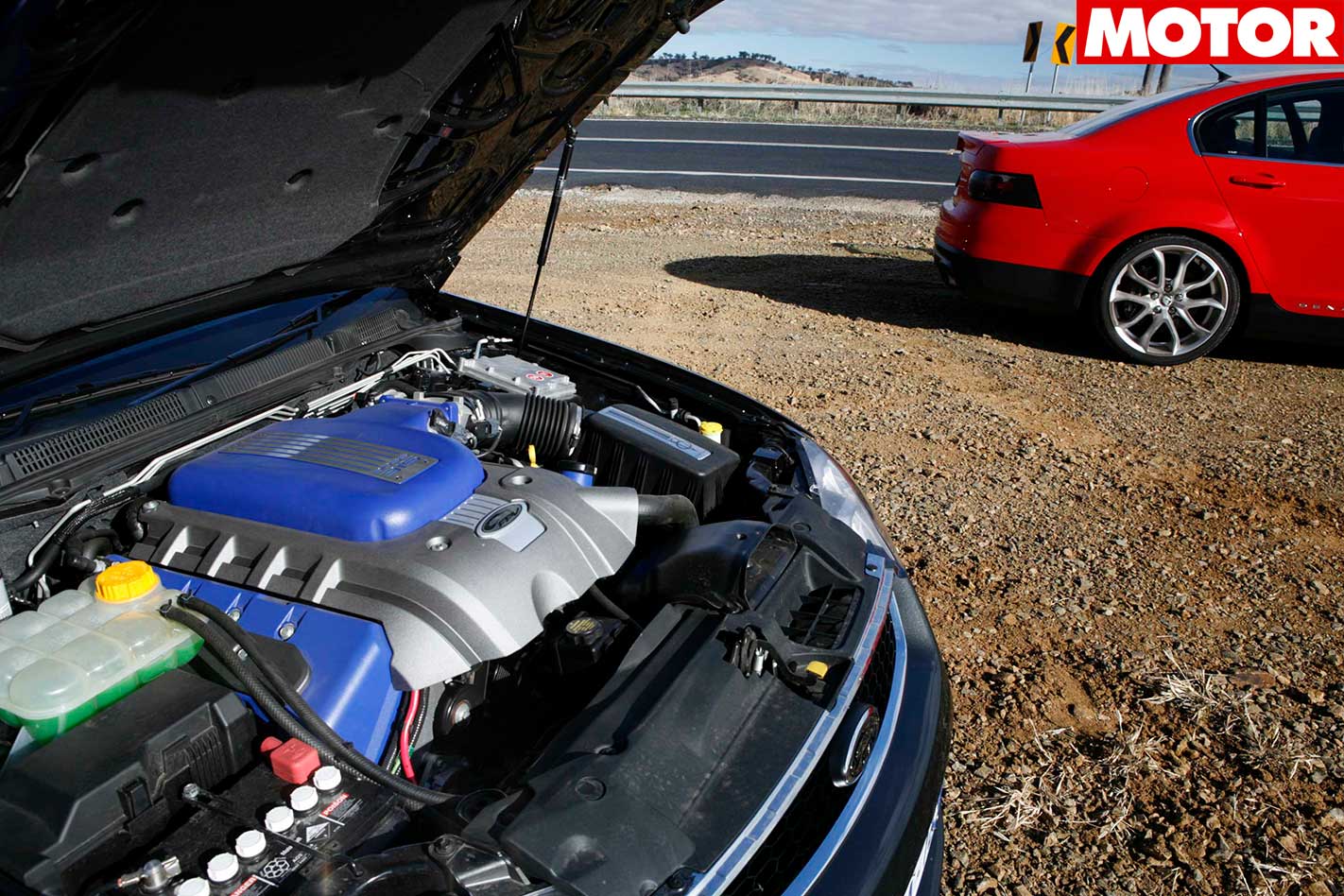
That’s close. But the flavour of their performance differs markedly.
The FPV’s newfound, hair-trigger throttle response is a double-edged sword in that it delivers the most immediate response for part-throttle overtaking and makes the car feel lively, but proves counter-productive when you’re hammering through corners.
Without acute throttle control, these sharp bursts of power cause the GT-E’s front-end to pitch up and down – a feeling exacerbated by the top-heavy mass of the Boss engine – and undermine the inherent composure of the FG FPV’s supple chassis.
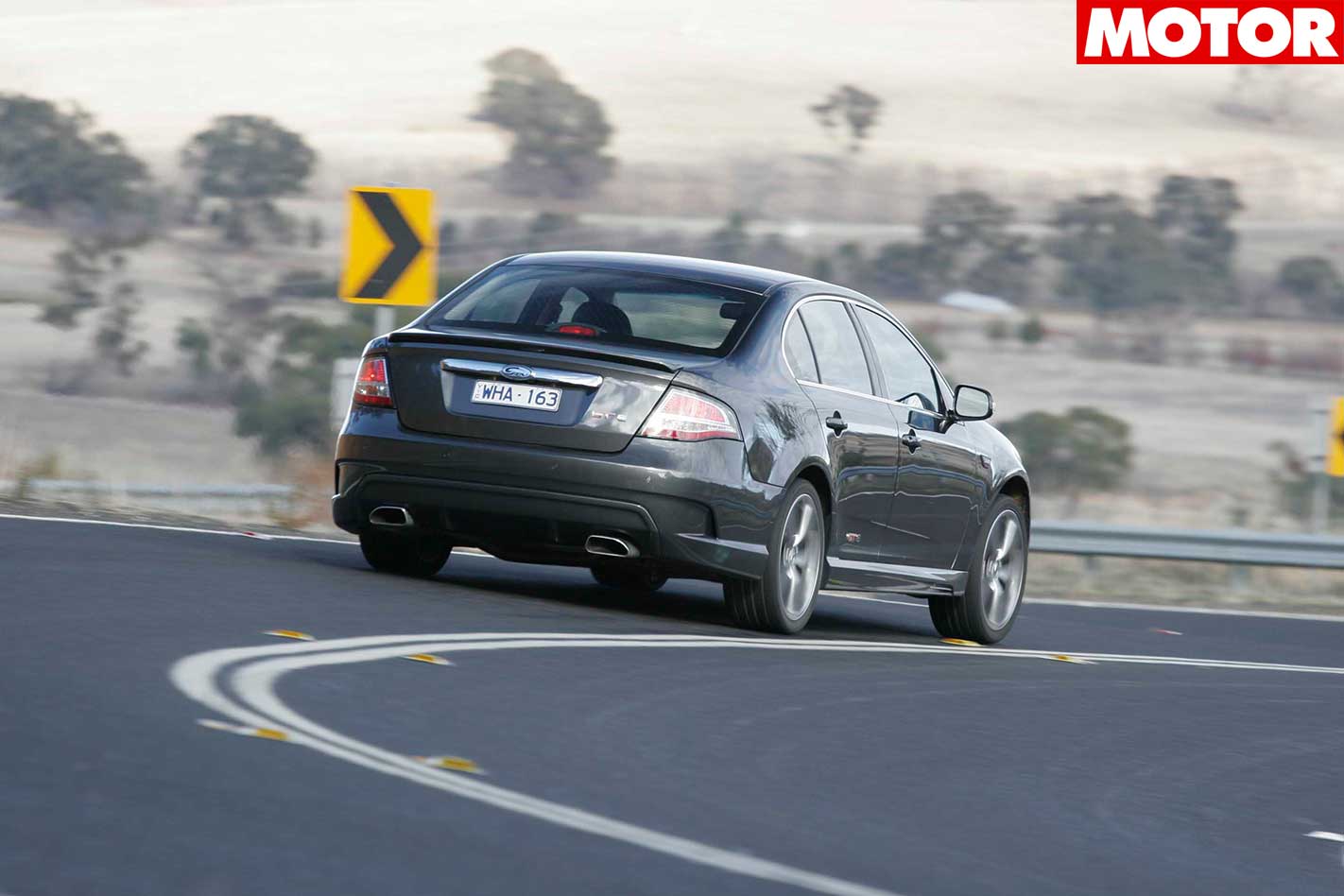
The connection the driver has with the front wheels through its steering is exemplary. Deliciously reactive off-centre without feeling nervous, the FG’s all-new steering set-up imbues the GT-E with an agility that makes it feel a lot smaller and lighter than it is. And the numbers only confirm how quick the FPV’s steering is – combining the fastest lock-to-lock (at 2.6 turns) with the tightest turning circle (at 11.0 metres).
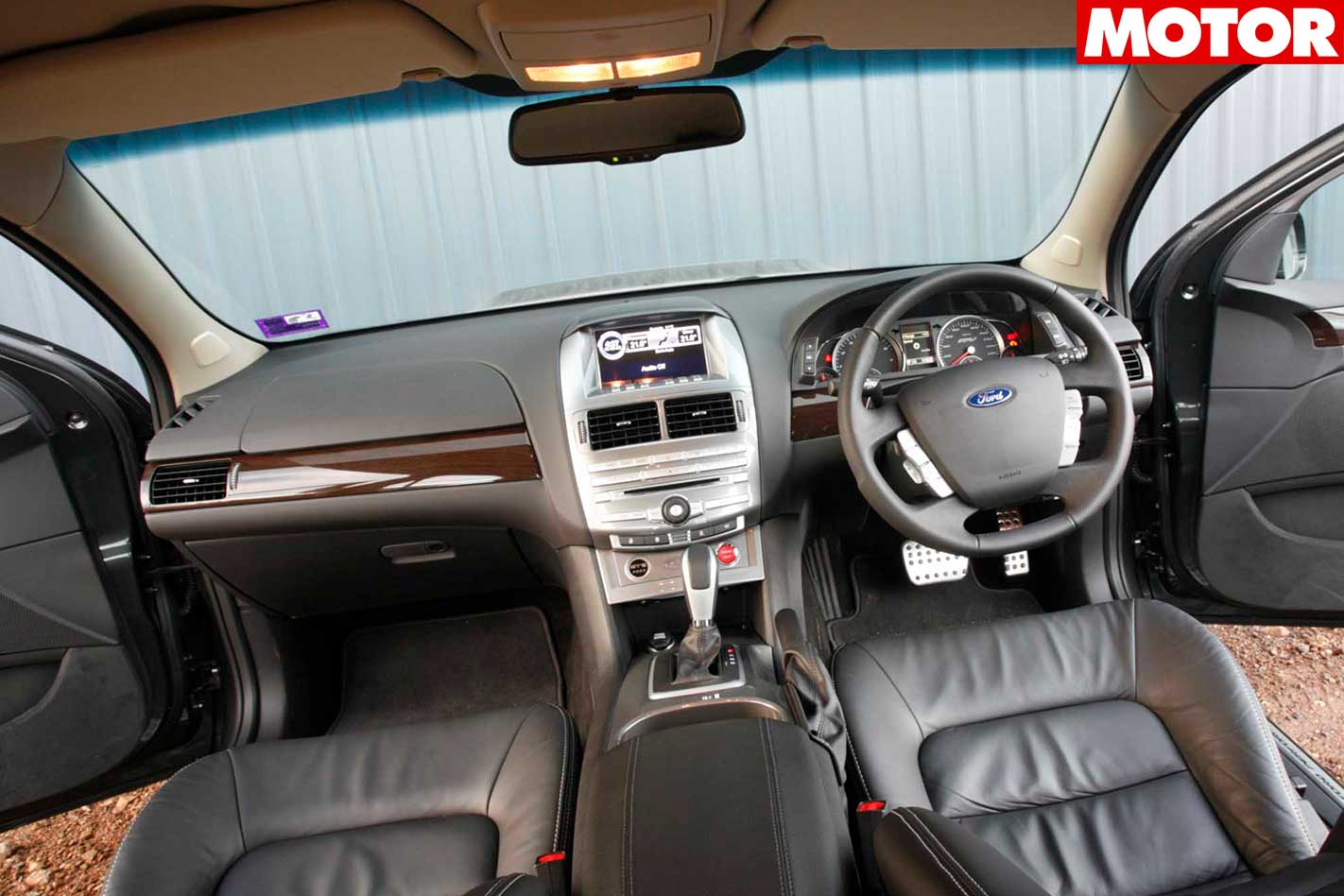
In fact, while the stiffer suspension tune makes the car’s ride unsettled when you’re cruising over patchy surfaces, it actually keeps body motion tight. And despite the utterly remote steering feel through the truck-sized wheel, the big Yank actually hangs on surprisingly well. Thank the Chrysler’s wide stance and relatively low centre of gravity.
After only a few bends, the SRT8 gives you enough confidence to really carry some speed into both low- and high-speed corners. But miles of pedal travel means the brakes require some trust. Initial bite isn’t comforting when you’re charging into a tight elbow, but the skids pull up alright once your foot is well-buried.
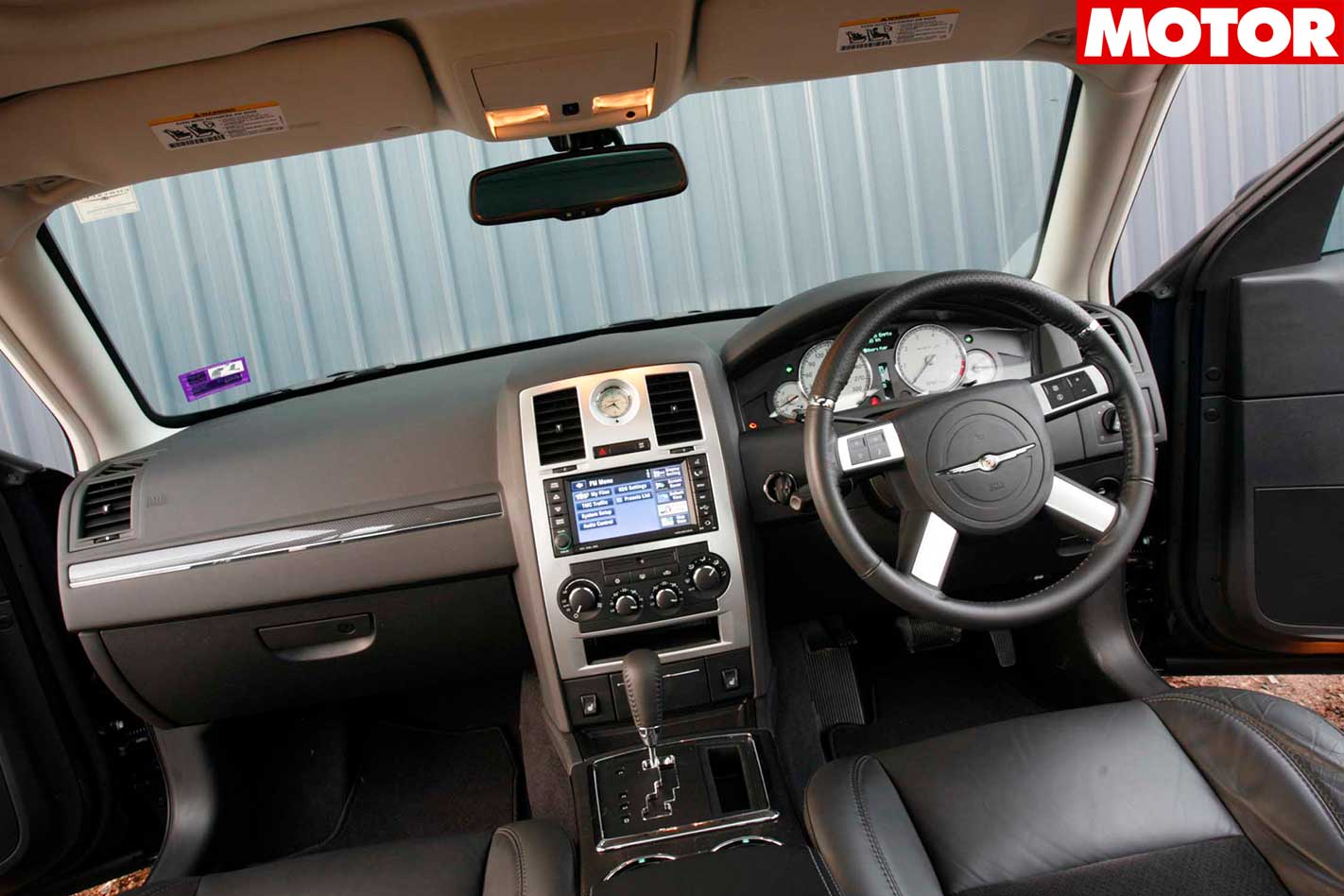
The SRT8’s tall-geared five-speed auto might be a cog short compared to the FPV and HSV, but it makes a valiant effort in facilitating swift progress. Not that the task is difficult when you’re bolted to a Hemi V8 that wants to twist the car in half, but just don’t rely on the auto in manual mode, because it only responds to your inputs when it feels like it.
Contrastingly, manual mode is the only way to make sense of the HSV’s 6L80 six-speed auto.
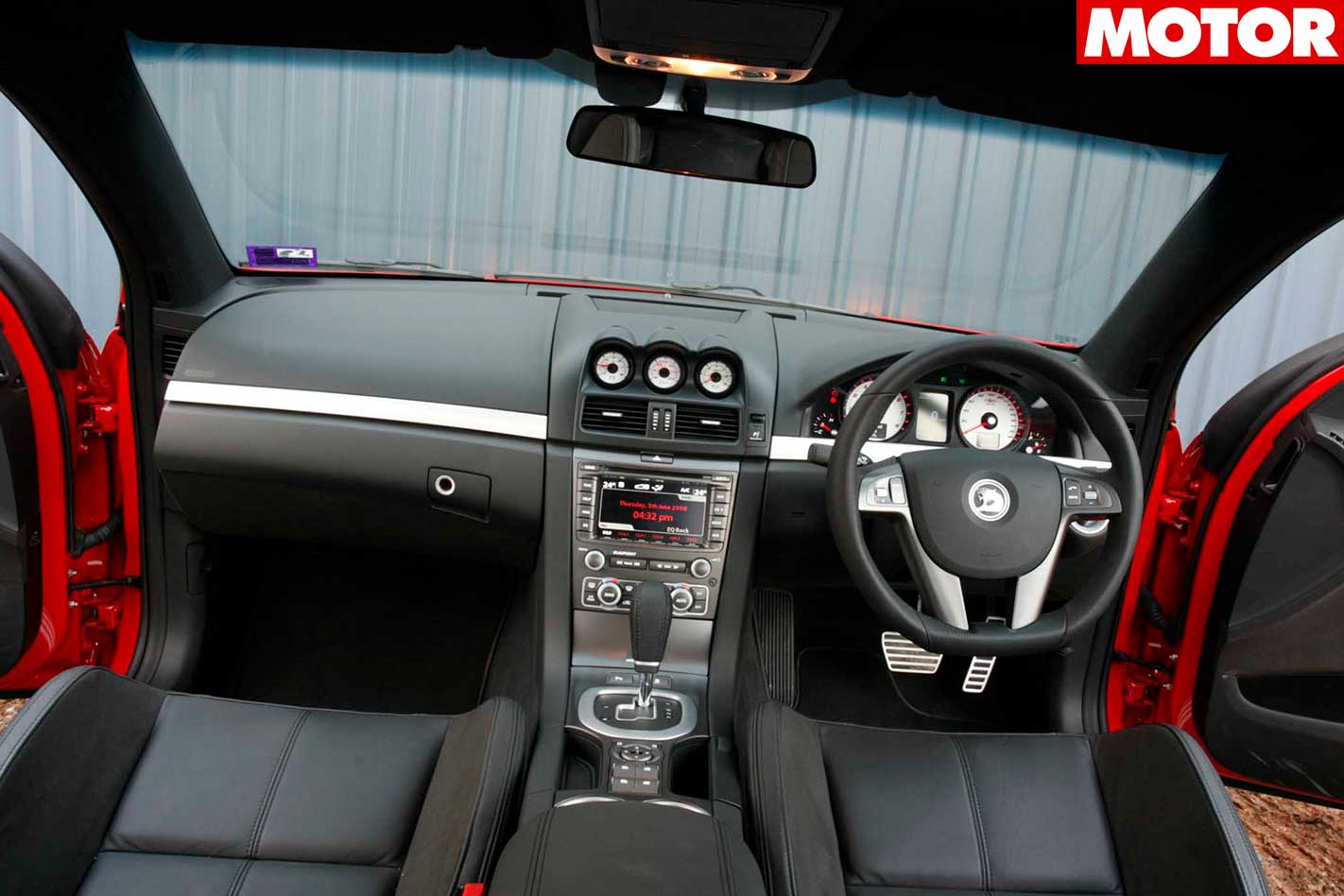
In manual mode, the 6L80 transforms into the most focussed transmission of the lot, apart from its slightly uncouth upchanges. It’ll blip revs beautifully as you downchange on the way into a corner and responds promptly to each and every command.
You couldn’t ask for more, apart from wheel paddles. And most of the same is true of the FPV’s ZF six-speed. Except it doesn’t attempt to match revs when you’re changing down, which is hard to fathom when in the Jaguar XF, the very same gearbox manages it beautifully every time.
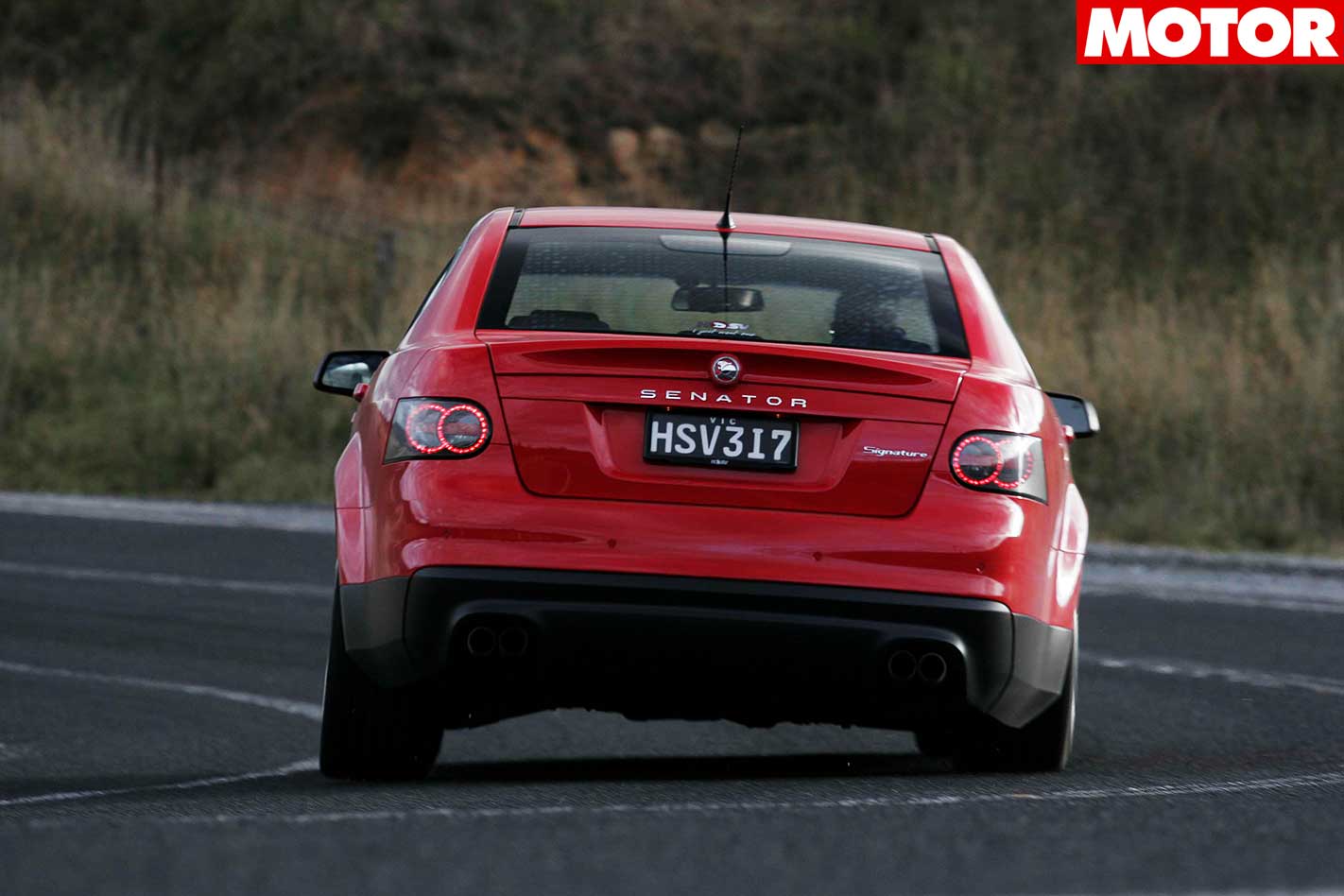
The first thing you notice is that the damping is only firm on rebound. That makes for a comfortable ride as the softer compression damping takes the hit from any divots in the road, but the firmer rebound damping settles the car’s weight swiftly and effortlessly. The end result is a supremely comfortable ride, especially in comparison with the other two here.
But whether you’re hauling through tight terrain or carving through fast sweepers, the HSV Senator is far and away the most composed at speed.
The more you ask of the Senator, the more its chassis elevates itself above its rivals. The Senator’s steering hustles the nose around well, but isn’t as fast and doesn’t quite have the communication that the FPV’s does. But no matter what you demand of the HSV, it’ll still be working with you when the FPV and Chrysler have run out of talent.
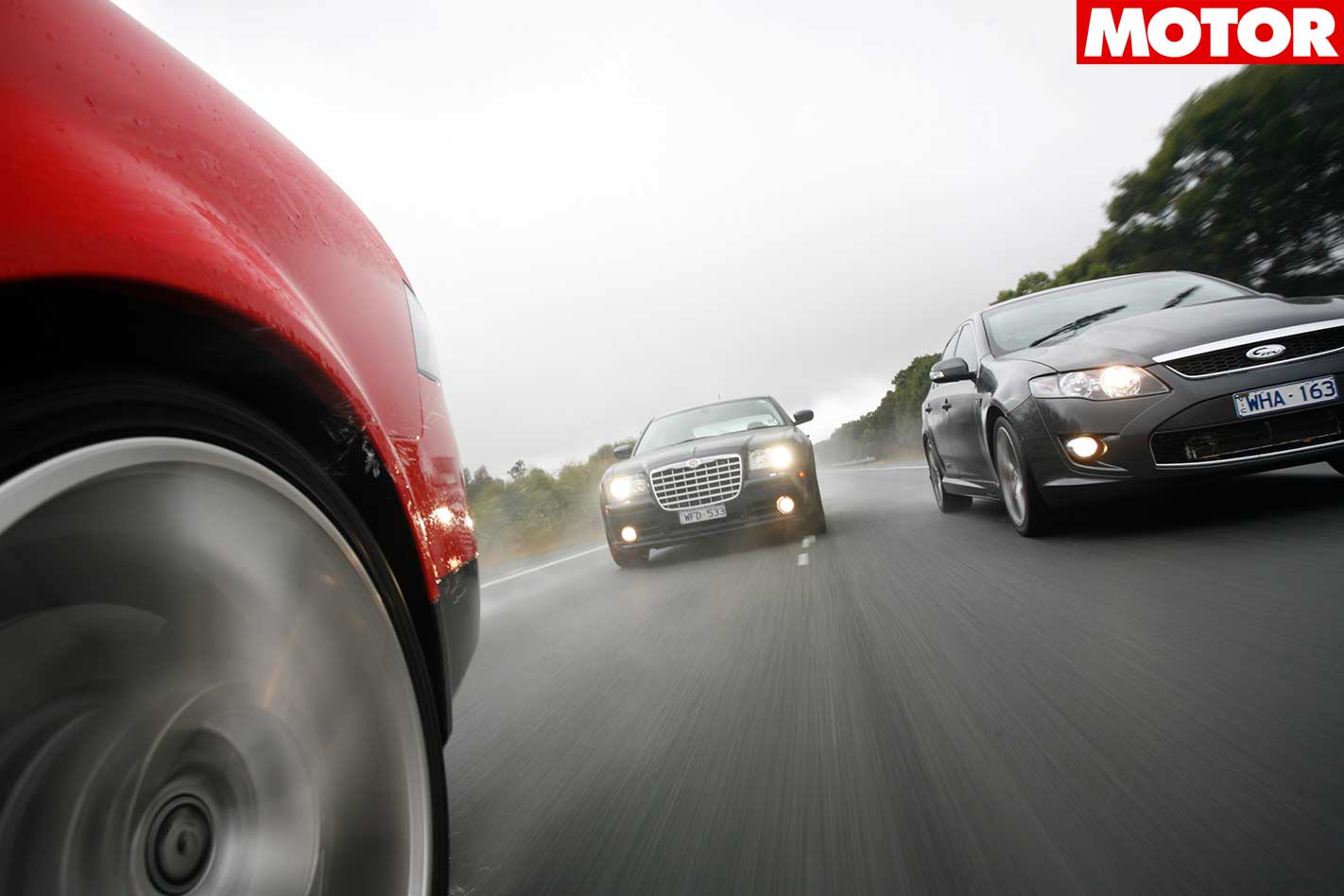
Refreshingly, the Senator’s knobbly ride at sensible speeds doesn’t worsen as you gather velocity and it skips lightly over road irregularities without major upset, even under hard cornering load. Switching the Magnetic Ride Control (MRC) to the stiffer performance mode arrests body roll noticeably when you’re peddling hard, but unless you’re threading up mountain passes, MRC is best left in normal mode.
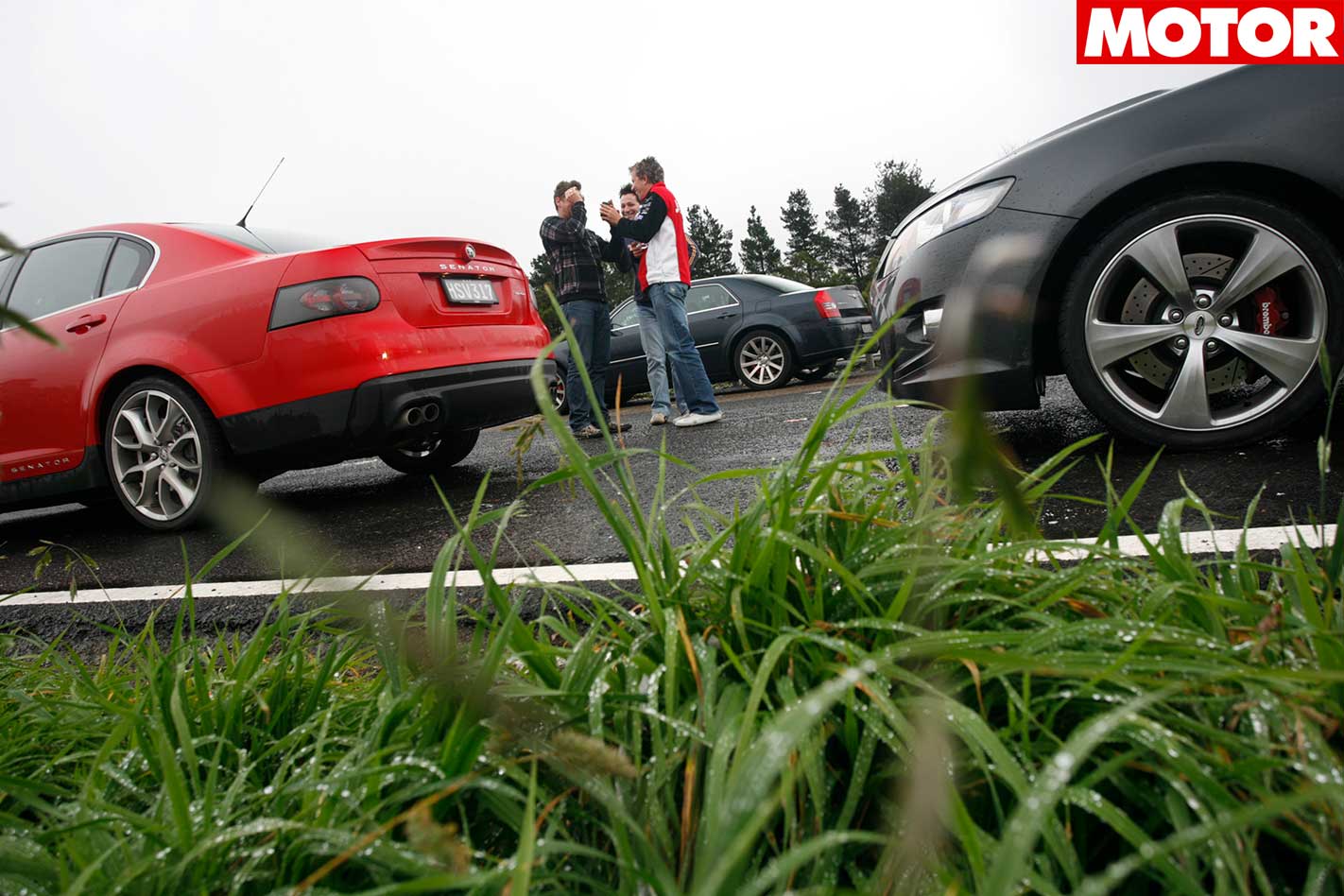
The black-and-silver switchgear looks neat and the dash is integrated far more seamlessly into the rest of the cabin. The front seats give great support and look expensive, replete with Alcantara inserts and neatly exposed stitching. But the sculpted rear bench is a stand-out – offering almost as much support as it does up front and providing good visibility.
The Chrysler’s thick front seats are average, and you find yourself hanging off the wheel most of the time when you’re hurling the car through corners. Apart from awful, wax-paper-effect instruments, the dash looks the part, with splashings of bling and an equipment level that’s just ahead of the HSV.
Principally, that’s sat-nav, auto wipers, an auto-dimming rear vision mirror, electric front seat adjustment and a thumping Boston Acoustics stereo. Which can’t be said of the GT-E, sadly.
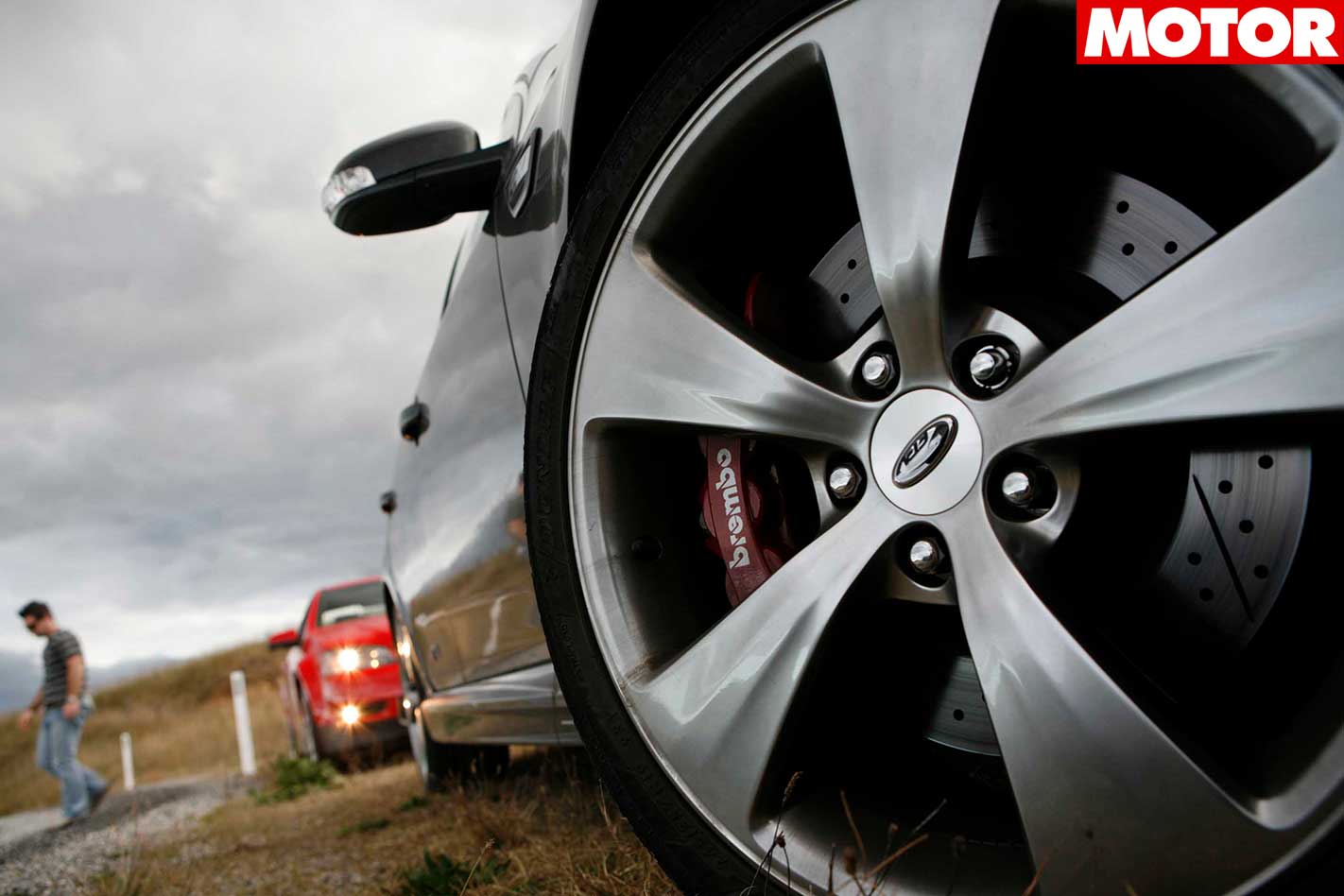
But our biggest gripe concerns the full-manual adjustment for the front passenger’s seat and the resultant lack of under-thigh support – in a $77K Falcon? We’ll let you be the judge on that one…
But we’re happy to make the call on this comparison, though. After all, Mr Baby Boomer has an important decision to make. If he wears a pin-striped suit, then he’ll roll in the good-value 300C SRT8.

The GT-E is a significant step forward from FPV’s last foray into the luxury-performance market, and if our maturing friend is as loyal to the blue oval as he is to his one and only blazer, then he’ll be proud to call this muscle car his own.
Key conflicts let it down in our eyes, though. The equipment oversights are disappointing, and detail flaws like the over-sensitive throttle leave the car somewhat unresolved. It doesn’t look classy enough to be proper luxury car, but it isn’t quite cohesive enough as a performance package, either, despite its great brakes, sweet steering and strong engine.
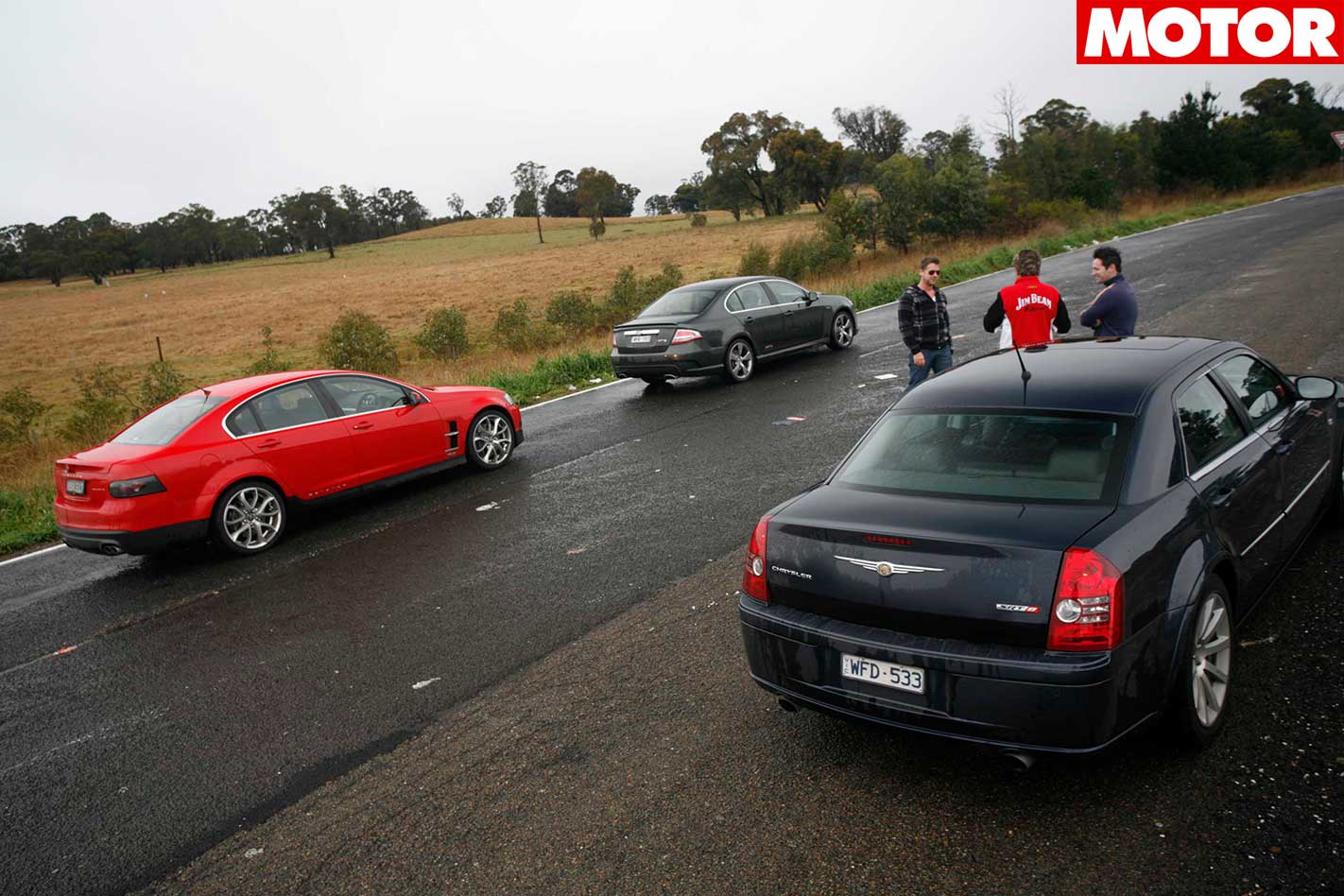
The HSV Senator might just represent The Dream.
FAST FACTS
| u00a0 | 2008u00a0FPV GT-E | 2008u00a0Chrysler 300C SRT8 | 2008u00a0HSV Senator |
| BODY | 4-door, 5-seat sedan | 4-door, 5-seat sedan | 4-door, 5-seat sedan |
| DRIVE | rear-wheel | rear-wheel | rear-wheel |
| ENGINE | 5408ccu00a090-degree V8, DOHC, 32v | 6063ccu00a090-degree V8, OHV, 16v | 6162cc 90-degree V8, OHV, 16v |
| BORE/STROKE | 90.2 x 105.8mm | 103.0 x 90.9mm | 103.25 x 92.0mm |
| COMPRESSION | 10.8:1 | 10.3:1 | 10.7:1 |
| POWER | 315kW @ 6500rpm | 317kW @ 6000rpmu00a0 | 317kW @ 6000rpmu00a0 |
| TORQUE | 551Nm @ 4750rpm | 569Nm @ 4600rpm | 550Nm @ 4600rpm |
| WEIGHT | 1896kg | 1920kg | 1844kg |
| POWER/WEIGHT | 166kW/tonne | 165kW/tonne | 172kW/tonne |
| TRANSMISSION | 6-speed automatic | 5-speed automatic | 6-speed automatic |
| GEAR RATIOS | 4.17/2.34/1.52/1.14/0.87/0.69 | 3.59/2.19/1.41/1.00/0.83 | 4.03/2.36/1.53/1.15/0.85/0.67 |
| FINAL DRIVE | 2.73 | 3.06 | 3.27 |
| SUSPENSION (front) | Double A-arms, coil springs, anti-roll bar | Double A-arms, coil springs, anti-roll bar | Struts, A-arms, magnetic dampers, anti-roll bar |
| SUSPENSION (rear) | Multi-links, coil springs, anti-roll bar | Multi-links, coil springs, anti-roll bar | Multi-links, coil springs, magnetic dampers, anti-roll bar |
| L/W/H | 4970/1868/1453mm | 5015/1880/1462mm | 4947/1899/1468mm |
| WHEELBASE | 2838mm | 3050mm | 2915mm |
| TRACKS | 1583/1598mmu00a0(f/r) | 1600/1605mmu00a0(f/r) | 1592/1590mmu00a0(f/r) |
| STEERING | power rack-and-pinion | power rack-and-pinion | power rack-and-pinion |
| BRAKES (front) | 355mm ventilated/drilled discs, six-piston calipers | 360mm ventilated discs, four-piston calipers | 365mm ventilated discs, four-piston calipers |
| BRAKES (rear) | 330mm ventilated/drilled discs, four-piston calipers | 350mm ventilated discs, four-piston calipers | 350mm ventilated discs, four-piston calipers |
| DRIVER AID | ABS, EBD, BA, DSC | ABS, EBD, BA, DSC | ABS, EBD, BA, ESP |
| WHEELS | 19 x 8.0-inch, alloyu00a0(f/r) | 20 x 8.0-inch, alloyu00a0(f/r) | 20 x 8.0-inch (f), 20 x 9.5-inch (r), alloy |
| TYRE SIZES | 245/35ZR19 93Yu00a0(f/r) | 245/45ZR20 99Y (f), 255/45ZR20 101Y (r) | 245/35R20 95Y (f), 275/30R20 97Y (r) |
| TYRE | Dunlop SP Sport Maxx | Goodyear Eagle F1 | Bridgestone Potenza RE050A |
| FUEL/TANK | 95 octane/68 litres | 98 octane/72 litres | 98 octane/64 litres |
| TEST CONSUMPTION | 15.8L/100km | 17.3L/100km | 17.3L/100km |
| PRICE (in 2008) | $78,990 (incl. sat-nav) | $74,290 (incl. metallic paint) | $81,690 (incl. 20u2019s) |
| PROS | Excellent steering; superb auto; plush ride; impressive brakes | Street-stopping presence; rich Hemi soundtrack; good value | Athletic V8; awesome grip; superb seats; subtly tough style |
| CONS | Bulky V8; touchy throttle; ho-hum styling; detail omissions | Numb steering feel; average packaging; lumpy ride quality | Test caru2019s indecisive auto; more road noise than rivals |
| RATING | 7 out of 10 stars | 6.5 out of 10 stars | 8 out of 10 stars |

THE NUMBERS
| u00a0 | FPV GT-E | Chrysler 300C SRT8 | HSV Senator |
| 0-10km/h (sec) | 0.38 | 0.39 | 0.34 |
| 0-20km/h (sec) | 0.86 | 0.84 | 0.72 |
| 0-30km/h (sec) | 1.32 | 1.27 | 1.21 |
| 0-40km/h (sec) | 1.84 | 1.76 | 1.66 |
| 0-50km/h (sec) | 2.32 | 2.23 | 2.10 |
| 0-60km/h (sec) | 2.79 | 2.68 | 2.65 |
| 0-70km/h (sec) | 3.53 | 3.16 | 3.13 |
| 0-80km/h (sec) | 4.10 | 3.79 | 3.73 |
| 0-90km/h (sec) | 4.77 | 4.48 | 4.36 |
| 0-100km/h (sec) | 5.46 | 5.17 | 5.08 |
| 0-110km/h (sec) | 6.21 | 5.88 | 5.85 |
| 0-120km/h (sec) | 7.03 | 6.64 | 6.70 |
| 0-130km/h (sec) | 8.04 | 7.67 | 7.59 |
| 0-140km/h (sec) | 9.07 | 8.79 | 8.54 |
| 0-150km/h (sec) | 10.15 | 9.92 | 9.60 |
| 0-160km/h (sec) | 11.31 | 11.09 | 10.94 |
| 0-170km/h (sec) | 12.52 | 12.31 | 12.26 |
| 0-180km/h (sec) | 13.74 | 13.61 | 13.59 |
| 0-400m | 13.46 @ 177.73km/h | 13.26 @ 177.42km/h | 13.17 @ 176.74km/h |
| 80-120km/h | 2.94sec | 2.88sec | 2.97sec |

